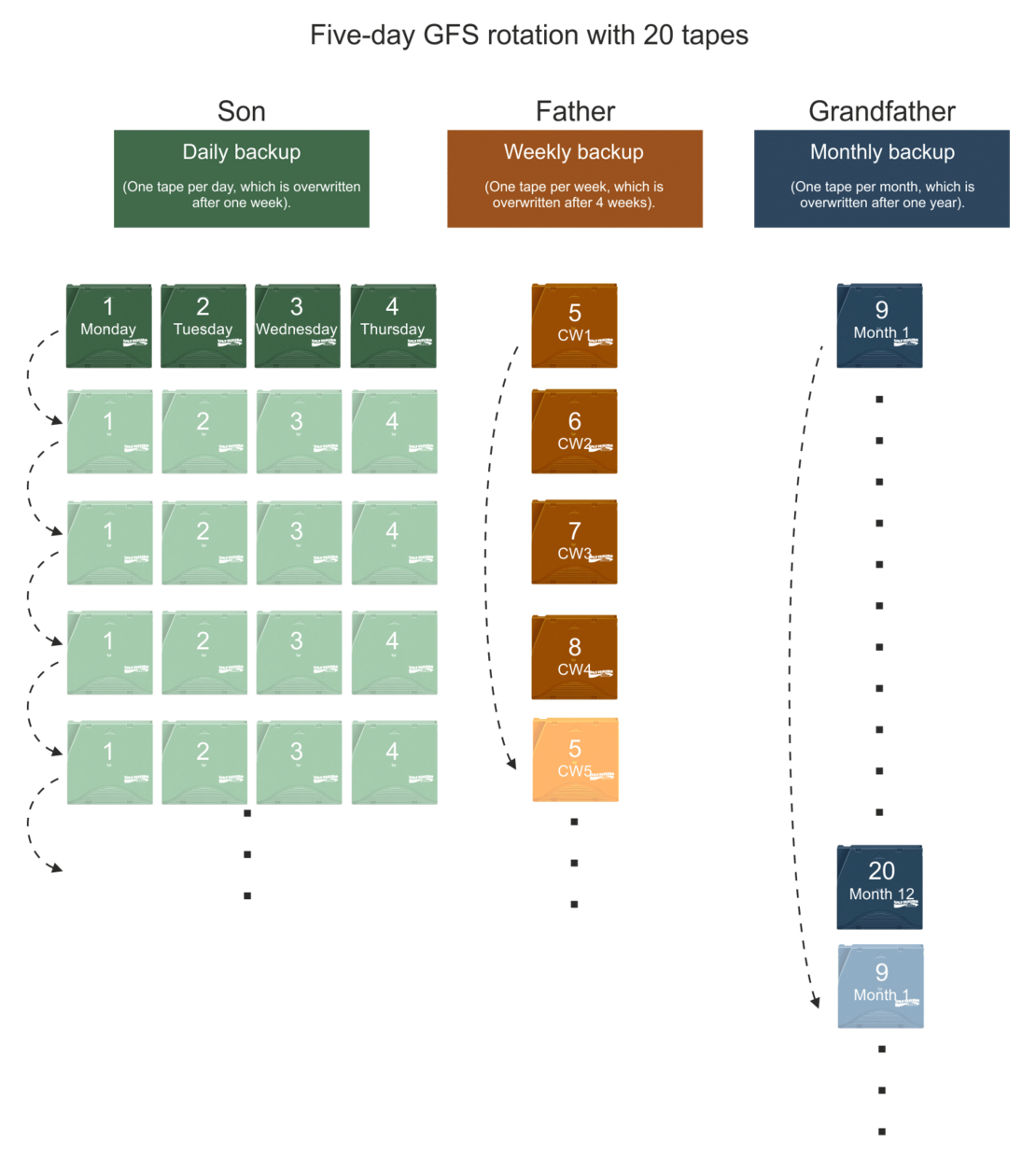What is GFS rotation respectively Backup rotation scheme?
A retention policy for backups explained.
Ideally, backups should be able to be restored at any time. A method often used for this is called GFS rotation. It describes the chronological sequence of backups in a family hierarchy: Grandfather - Father - Son
In this guideline, "son" is synonymous with the daily, "father" with the weekly and grandfather with the monthly backup of the data carrier sets to tape or disc. Advantage: the GFS rotation schedules allow administrators to back up the data with a minimum number of data carriers (tapes) over the year.
This rotation scheme therefore ensures that if data is damaged at the "father" level, the "grandfather" level can be used. The same applies to the "son" level. This is why this scheme is also referred to as the generation principle.

Son – Father – Grandfather
- During the week, the admin backs up to a different tape every day. This means that four daily tapes are required on five working days. Daily backups can be performed as incremental, differential or full backups. At the end of a week, the tapes are sequentially reused and overwritten. Tapes for daily backups are naturally more heavily used than weekly or monthly tapes and therefore need to be replaced more often.
- At the end of a week - the fourth or fifth day, depending on the cycle - the IT specialist creates the weekly backup. This is usually a complete backup. Equivalent to the daily backup, the weekly tapes are also recycled after the fourth week and overwritten with the upcoming weekly backup in the fifth week.
- For the monthly backup, the backup is performed in a similar sequence. Depending on the convention, the person responsible can specify a fixed date (1st day of the month, last working day or last calendar day) and describe the first of twelve monthly tapes. As before, the first tape is reused after the twelfth month.
It all depends on the setting
According to this requirement, a total of 20 data carriers (tapes) are needed for a smooth GFS rotation. If the administrator also creates a daily backup on the last day of the week and also creates an additional weekly backup immediately before the monthly backup, additional tapes are required accordingly.
A great-grandfather for the archive
For complete protection or for legally required archiving, it is advisable to also establish a great-grandfather generation – so an annual backup. After all, companies in Germany are obliged to store their documents for ten years. In this case, additional data carriers are required.
It goes without saying that such important complete backups should also be stored in a safe place. A steel cabinet or, even better, a safe is ideal for this.
